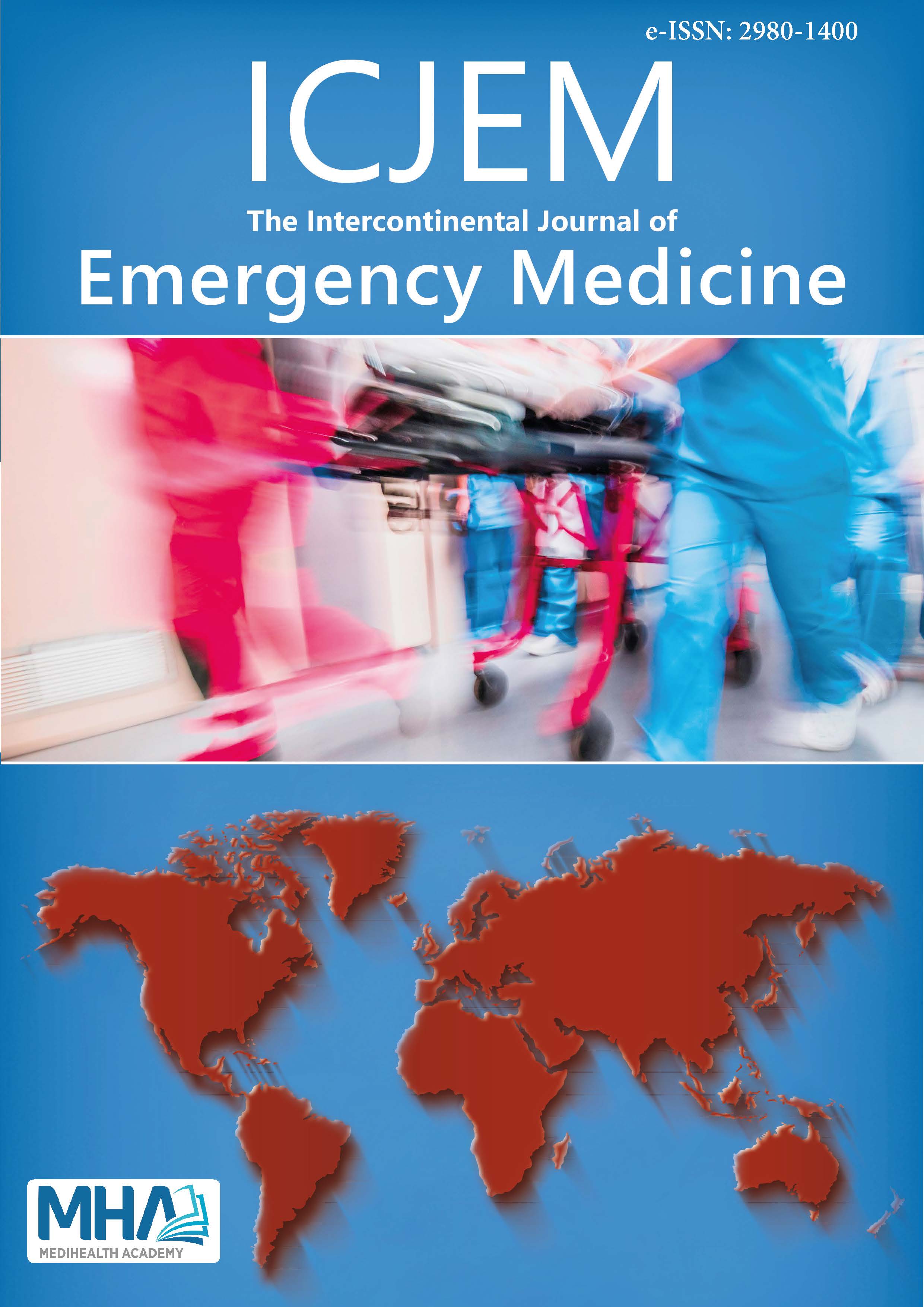1. Clark DE, Ryan LM. Concurrent prediction of hospital mortalityand length of stay from risk factors on admission. Health Serv Res.2002;37:631-645.
2. Moore FA, Sauaia A, Moore EE, Haenel JB, Burch JM, Lezotte DC.Postinjury multibl organ failurera bimodal phenoenon. J Trauma.1996;40:5001-512.
3. Regel G, Lobenhoffer P, Grotz M,Pape HC,Lehmann U,Tscheme H.Treatment results of patients with multibl trauma :an analysis of 3406cases treated between 1972 and 1991 at a German level I trauma çenter.J Trauma. 1995;38:70-78.
4. Moore FA, Moore EE. Trauma resuscitation. In: Wilmore DW, CheungLY, Harken AH, Holcroft JW, Meakins JL, Soper NJ (eds). AmericanCollege of Surgeons: ACS surgery. New York: WebMD Corporation,2002:31-37.
5. Nathens AB, Maier RV. Shock and resuscitation. In: Norton JA,Bollinger RR (eds). Essential Practice of Surgery. New York: Springer-Verlag, 2003:95-102.
6. Çelik Z. Anıl C. İntravenöz uygulama komplikasyonları. GüncelGastroenteroloji. 2004;8(2): 158-164.
7. Grathwohl KW, Bruns BJ, LeBrun CJ, Ohno AK, Dillard TA, CushnerHM. Does hemodilution exist? Effects of saline infusion on hematologicparameters in euvolemic subjects. South Med J. 1996;89(1):51-55.
8. Lobo DN, Stanga Z, Simpson JA, Anderson JA, Rowlands BJ, AllisonSP. Dilution and redistribution effects of rapid 2-litre infusions of 0.9%(w/v) saline and 5% (w/v) dextrose on hematological parameters andserum biochemistryin normal subjects: a double-blind crossover study.Clin Sci (Lond). 2001;101(2):173-179.
9. Lobo DN, Stanga Z, Aloysius MM, et al. Effect of volüme with 1liter intravenous infusions of 0.9% saline, 4% succinylated gelatine(gelfusine) and 6% hydrocyethyl starch (voluven) on blood volumeand endocrine responses: a randomized, threeway crossover studyinhealthy volunteers.Crit Care Med. 2010;38(2):464-470.
10. Karaaslan K, Durmufl M, But AK, Ersoy Ö, Arınç H. Akutnormovolemik hemodilüsyonun koroner arter bypass cerrahisindeetkileri. Türk Göğüs Kalp Damar Cer Derg. 2005;13:77-83.
11. Thorson CM, Ryan ML, Van Haren RM, et al. Change in hematocritduring trauma assessment predicts bleeding even with ongoing fluidresuscitation. Am Surg. 2013;79(4): 398-406.
12. Çakmakçı M, Sayek. Temel Cerrahi, Sayek. (Ed.) III. Baskı. Ankara:Güneş Kitabevi, 2004, 177-184.
13. Quispe-Cornejo AA, Alves da Cunha AL, Njimi H, et al. Effects ofrapid fluid infusion on hemoglobin concentration: a systematic reviewand meta-analysis. Crit Care. 2022;26(1): 324. doi: 10.1186/s13054-022-04191-x
14. Tan KK, Bang SL, Vijayan A, Chiu MT. Hepatic enzymes have a role inthe diagnosis of hepatic injury after blunt abdominal trauma. Injury.2009;40(9):978-983. doi: 10.1016/j.injury.2009.02.023
15. Sola JE, Cheung MC, Yang R, Koslow S, Lanuti E, Seaver C, NevilleHL, Schulman CI. Pediatric FAST and elevated liver transaminases:An effective screening tool in blunt abdominal trauma. J Surg Res.2009;157(1):103-107. doi: 10.1016/j.jss.2009.03.058
16. Hennes HM, Smith DS, Schneider K, Hegenbarth MA, Duma MA, JonaJZ. Elevated liver transaminase levels in children with blunt abdominaltrauma: apredictor of liver injury. Pediatrics. 1990;86(1):87-90.
17. Kumar S, Sagar S, Subramanian A, Albert V, Pandey RM, Kapoor N.Evaluation of amylase and lipase levels in blunt trauma abdominalpatients. J Emerg Trauma Shock. 2012;5(2):135-142. doi: 10.4103/0974-2700.96482
18. Tian Z, Liu H, Su X, et al. Role of elevated liver transaminase levels inthe diagnosis of liver injury after blunt abdominal trauma. Exp TherMed. 2012;4(2):255-260.
19. Bevan CA, Palmer CS, Sutcliffe JR, Rao P, Gibikote S, Crameri J. Bluntabdominal trauma in children: how predictive is ALT for liver injury?Emerg Med J. 2009;26(4):283-288. doi: 10.1136/emj.200X.062703
20. Zhao DW, Tian M, Zhang LT, et al. Effectiveness of contrast-enhancedultrasound and serum liver enzyme measurement in detection andclassification of blunt liver trauma. J Int Med Res. 2017; 45(1):170-181.doi: 10.1177/0300060516678525
21. Bilgic I, Gelecek S, Akgun AE, Ozmen MM. Predictive value ofliver transaminases levels in abdominal trauma. Am J Emerg Med.2014;32(7):705-708. doi: 10.1016/j.ajem.2014.03.052
22. Kirbi M, Grad A, Megli C B, Bajrovi C FF. Comparison of activestanding test, head-up tilt test and 24-h ambulatory heart rate andblood pressure monitoring in diagnosing postural tachycardia. FunctNeurol. 2013;28(1):39-45.
23. Zhang QF, Zhou HM, Wang CJ, Shao HB. Influence of high-voltageelectric burn on the microcirculation of heart in rabbit Zhonghua ShaoShang Za Zhi. 2012;28(3):173-177.
24. Kumar S, Sagar S, Subramanian A, Albert V, Pandey RM, Kapoor N.Evaluation of amylase and lipase levels in blunt trauma abdominalpatients. J Emerg Trauma Shock. 2012;5(2):135-142. doi: 10.4103/0974-2700.96482
25. Batman F, Aydınlı M, Sayek İ. Karaciğer fonksiyonlarınındeğerlendirilmesi. Temel Cerrahi. 2004;1295-1301.

